Istanbul, mystical and wondrous, nestled on the Bosphorus in the very centre of the world.
A vibrant, exciting city where the cultures of East and West, Asia and Europe, literally collide.
Wander its narrow, cobbled streets and let the treasures of the Grand Bazaar entice you; eastern spices, silks, lanterns, pottery, carpets and of course turkish delight!
Become entranced in the Hagia Sofia, opposite the beautiful Blue Mosque where their ancient walls tell their story, where Christianity and Islam merge, where you will be held spellbound.
Stand in the Roman Basilica Cistern and step into an ancient structure that will stun you, an incredible underground wonder held together by an assorted collection of pillaged greek columns.
Be captivated by the very many marvels of Istanbul!
Hagia Sophia
Hagia Sophia, meaning ‘Holy Wisdom’, was built by Emperor Justinian (527-565 A.D.) as a Christian Church and has been described as the 8th wonder of the world. After 916 years of Christian worship it became a mosque following the conquest of Istanbul by Fatih Sultan Mehmet in 1453. It was used as a mosque for 482 years until in 1935, under Ataturk’s orders, it opened its doors as the Hagia Sophia Museum.
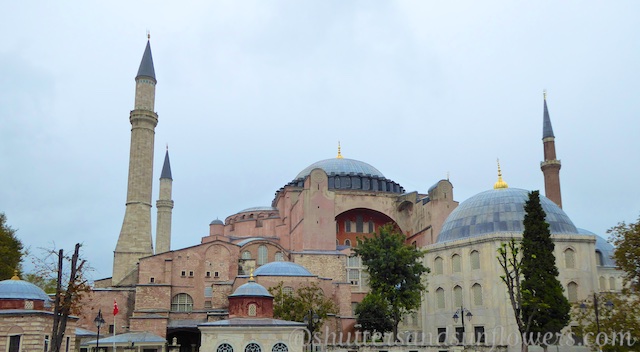
Stepping on the worn marble into this incredible spectacle, I wondered about all the others who have crossed this threshold over the centuries.
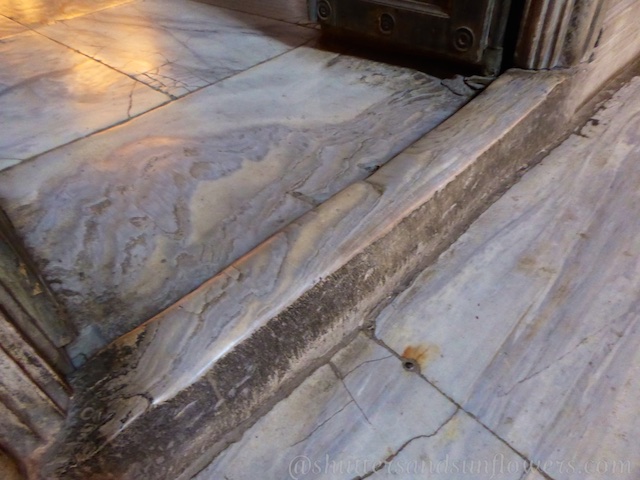
The breathtaking Hagia Sophia dome dominates the centre of the building.

In the half dome of the apse is the beautiful mosaic of the Virgin Mary and Baby Jesus, flanked either side by the mosque’s great calligraphy prophet panes.


The mosaic of the Virgin Mary probably dates from 867, when patriarch Photius inaugurated it. Over the centuries it has been damaged, the golden background is the original from the 9th century, the remainder is thought to be the result of a 14th century restoration.

The beautiful painted ceilings of the upper gallery.
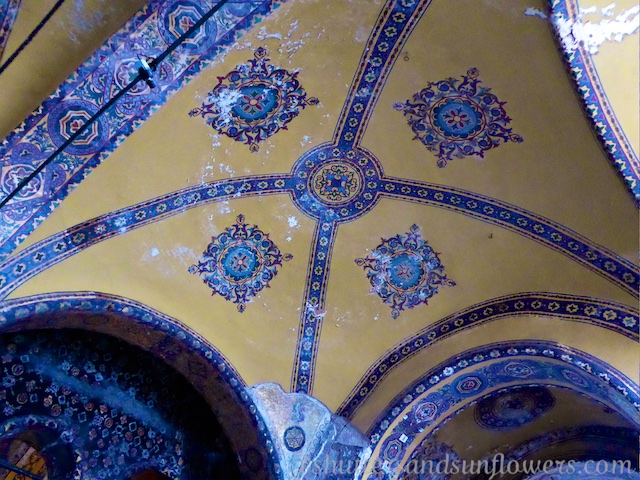
This mosaic in the upper south gallery, dates back to 1261. It is considered to have been a pioneer for Byzantine art in the Renaissance period because of its soft tones and emotional realism on the faces of the figures.

This is a painting of what this mosaic originally looked like.
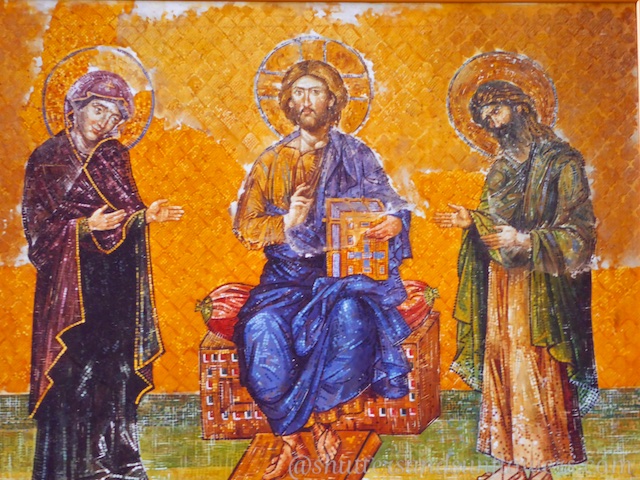
The Calligraphy panes as seen from the upper gallery.

These Calligraphy panes were created by the great calligrapher of the time, Kazasker Mustafa Izzet Efendi, as part of restoration work which was completed in 1849. There are 8 of them, each are 7.5 meters in diameter, the largest in the Islamic world and are written with gilt on a dark green background made of hemp. They contain the names of Allah, Muhammad, and the four caliphs, namely Abu Bakr, Umar, Uthman, Ali as well as the grandsons of Muhammad, namely Hasan and Husayn.

A view of the Hagia Sophia domes from the the upper gallery looking across to the Blue Mosque.

The 10th century mosaic which depicts Emperor Constantine – founder of Constantinople, holding a model of the city, on the left Emperor Justinian holding a model of Hagia Sophia, presenting them to the Virgin Mary holding the Child. This mosaic is opposite the south west entry doors, considered to be the oldest known doors in the world.

The Yerebatan Cistern
Nothing prepares you for the Basilica or The Yerebatan Cistern, just opposite the Hagia Sophia. The entry building is nothing of note, however as soon as you descend the steps down into the cistern you feel that you have entered somewhere almost other worldly.

The Yerebatan Cistern was constructed by Emperor Justinianus I, in 542A.D, to provide water for the Great Palace. It was called the Yerebatan Cistern by the locals due to the brilliance among the marble columns arising from the water. The water in the cistern came from the Belgrade Forest, 19km north of the city by a series of aquaducts also built by Emperor Justinianus.

Covering a huge area of 9800m2, the cistern measures 70m by 140m, it has 336 columns erected in 12 lines of 28, spaced 490cm apart. Most of the columns are ionic and corinthian taken from greek ruins near the city, a few are doric. The cistern is surrounded by a 4m brick and water wall.
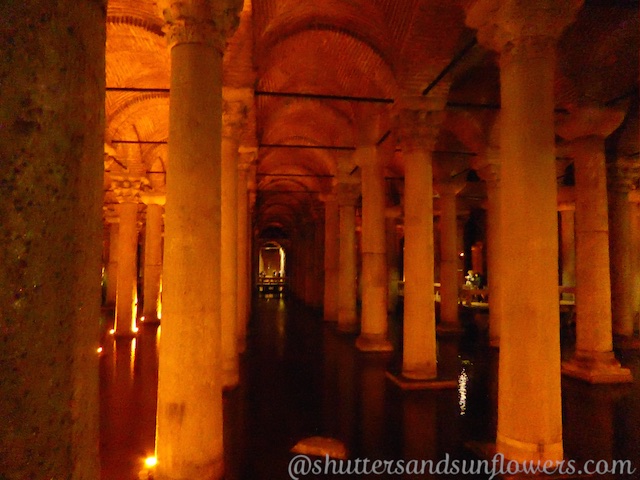
The Medusa Heads
The Medusa Heads, two Roman master pieces of sculpture, are found at the northwestern edge of the cistern where they are used as blocks under columns. It is not known where they came from, they were possibly bought from a building dating from the late Roman period. Their prescence adds to the mystery of the cistern. According to one story of Greek mythology Medusa was the only mortal sister of three Gorgona Giant sisters and possessed the power to turn people into stone. Another source says that Medusa, who was very proud of her long dark hair, black eyes and beautiful body was in love with Perseus, son of Zeus. However the goddess Athena, who was also in love with Perseus turned Medusa’s hair into a head of snakes which turned anyone that looked at her into stone. Perseus, broken hearted, cut off her head and won many wars by showing his beloved’s head to his enemies. From that time on it is said that the heads of all Byzantine swords were stylized into Medusa’s head.
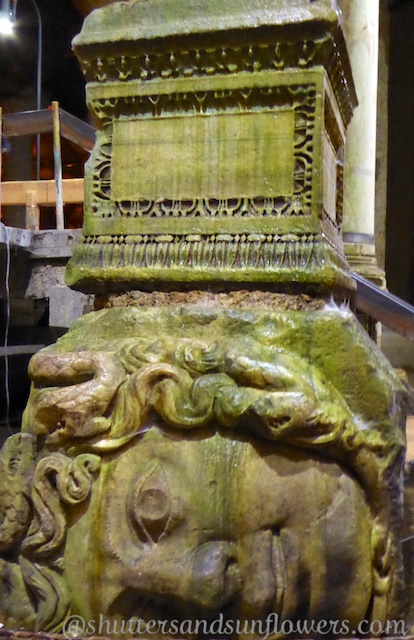
The cistern was rediscovered in 1545 by Petrus Gyllius, a french scholar, who whilst visiting Constantinople heard strange stories of locals drawing up water—and even fish—from their basement. He investigated and found the gigantic subterranean cistern full of rubbish and corpses. It was repaired several times over the centuries and restored in the eras of Ahmed III (1723) then Sultan Abdulhamid II (1876-1909). In 1987 it was cleaned and opened for public viewing.
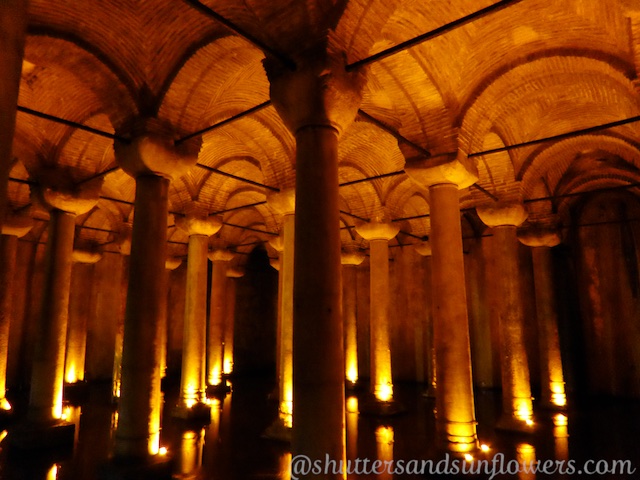
The Cistern is, quite simply, unbelievably breathtaking!
The Grand Bazaar
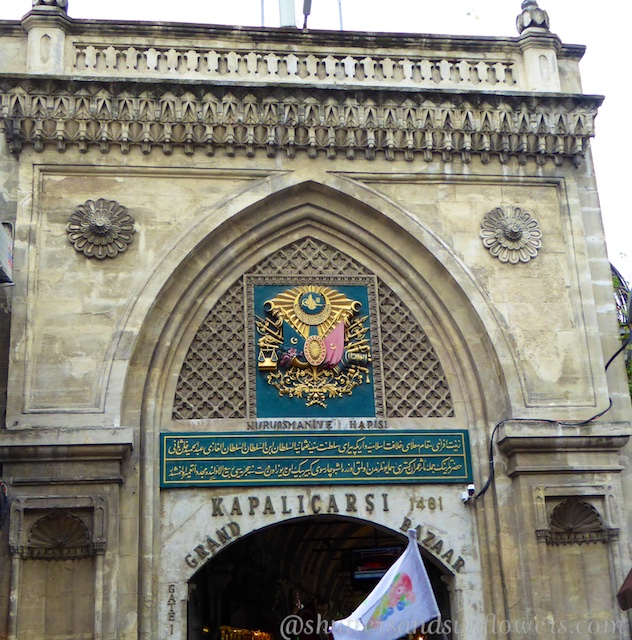
The Grand Bazaar, a colorful warren of market stalls, is one of the oldest and largest covered markets in the world set under elaborately painted domed ceilings.

There are so many things temptations; turkish lanterns,

jasmine tea, one of many teas and spices,

brightly coloured embroidered boots,
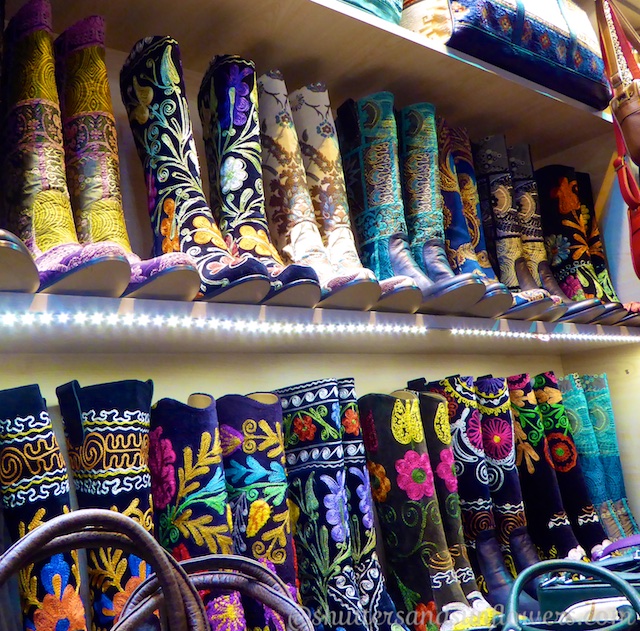
turkish carpets,

and turkish delight are just a few of the choices on display!
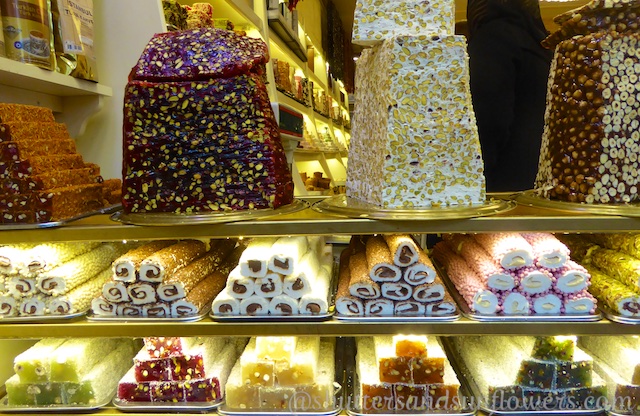
I only had 16 hours to explore this exciting city, it was the second time I had visited and amongst other things, would have loved to have returned to the Topkapi Palace, the Chora Church, Galata Tower and taken a cruise on the Bosphorus.
I would highly recommend the hotel we stayed in, Boutique Saint Sophia Hotel, situated within minutes of the Hagia Sophia, the Blue Mosque, Basilica Cistern and Grand Bazaar. A former Ottoman mansion, it was renovated in 2014 into a stylish, reasonably priced, boutique hotel with staff that could not have been more helpful, fabulous!



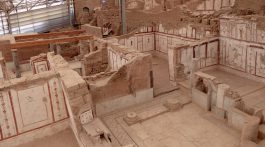

No Comment